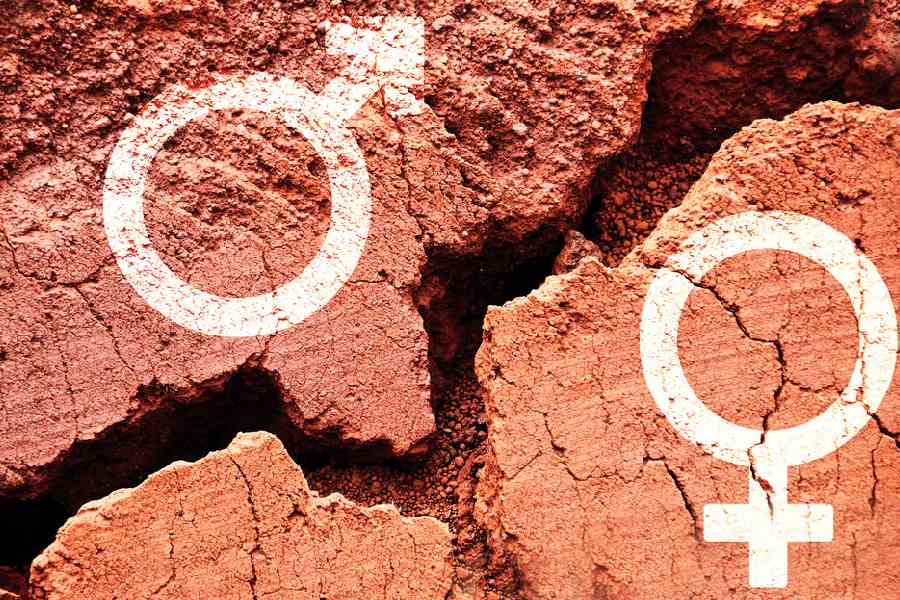India has ranked at 127 out of 146 countries in terms of gender parity -- an improvement of eight places from last year -- according to the World Economic Forum's annual Gender Gap Report, 2023.
The World Economic Forum (WEF) ranked India at 135 out of 146 countries in the Global Gender Gap Index in the report's 2022 edition.
India has improved by 1.4 percentage points and eight positions since the last edition, marking a partial recovery towards its 2020 parity level, the report stated.
The country has attained parity in enrolment across all levels of education, it said.
India has closed 64.3 per cent of the overall gender gap, the report said. However, it underlined that India has reached only 36.7 per cent parity on economic participation and opportunity.
The index ranked India's neighbours Pakistan at 142, Bangladesh at 59, China at 107, Nepal at 116, Sri Lanka at 115 and Bhutan at 103.
Iceland is the most gender-equal country in the world for the 14th consecutive year and the only one to have closed more than 90 per cent of its gender gap, according to the report.
In India, while there has been uptick in parity in wages and income, the share of women in senior positions and technical roles have dropped slightly since the last edition, the report pointed out.
On political empowerment, India has registered 25.3 per cent parity, with women representing 15.1 per cent of parliamentarians -- the highest for the country since the inaugural report in 2006.
Out of the 117 countries with available data since 2017, 18 countries -- including Bolivia (50.4 per cent), India (44.4 per cent) and France (42.3 per cent) -- have achieved women's representation of over 40 per cent in local governance.
This comes after Women and Child Development Minister Smriti Irani earlier this year said the WEF recognised the need to enumerate women's participation in local government bodies in its Gender Gap Report after the government raised the with it in Geneva.
For India, the 1.9 percentage point improvement in sex ratio at birth has driven up parity after more than a decade of slow progress, the report said.
However, it also said that for Vietnam, Azerbaijan, India and China, the relatively low overall rankings on the Health and Survival sub-index is explained by skewed sex ratios at birth.
"Compared to top scoring countries that register a 94.4 per cent gender parity at birth, the indicator stands at 92.7 per cent for India (albeit an improvement over last edition) and below 90 per cent for Vietnam, China and Azerbaijan," it said.
Overall, the Southern Asian region has achieved 63.4 per cent gender parity, the second-lowest of the eight regions.
The score in South Asia has risen by 1.1 percentage points since the last edition on the basis of the constant sample of countries covered since 2006. The improvement is partially attributable to the rise in scores of populous countries such as India, Pakistan and Bangladesh.
In terms of the share of women in ministerial positions, 75 countries have 20 per cent or less female ministers.
Populous countries such as India, Turkey and China have less than seven per cent women ministers while those like Azerbaijan, Saudi Arabia and Lebanon have none.
Overall, the report said gender parity globally has recovered to pre-Covid levels but the pace of change has stagnated as converging crises slow progress.
While no country has yet achieved full gender parity, the top nine countries have closed at least 80 per cent of their gap.
The report found that the overall gender gap has closed by 0.3 percentage point from last year.
The overall progress in 2023 is partly due to the improvement in closing the educational attainment gap, with 117 out of the 146 indexed countries now having closed at least 95 per cent of the gap.
The report stated, "For the 146 countries covered in the 2023 index, the Health and Survival gender gap has closed by 96 per cent, the Educational Attainment gap by 95.2 per cent, Economic Participation and Opportunity gap by 60.1 per cent, and Political Empowerment gap by 22.1 per cent." Parity has advanced by only 4.1 percentage points since the first edition of the report in 2006, with the overall rate of change slowing significantly.
Closing the overall gender gap will require 131 years. At the current rate of progress, it will take 169 years for economic parity and 162 years for political parity, the report stated.
"While there have been encouraging signs of recovery to pre-pandemic levels, women continue to bear the brunt of the current cost of living crisis and labour market disruptions," said WEF Managing Director Saadia Zahidi.
"An economic rebound requires the full power of creativity and diverse ideas and skills. We cannot afford to lose momentum on women's economic participation and opportunity," Zahidi said.
The Global Gender Gap Report, now in its 17th edition, benchmarks the evolution of gender-based gaps in four areas: economic participation and opportunity; educational attainment; health and survival; and political empowerment. It is the longest-standing index which tracks progress on closing these gaps since its inception in 2006. It also explores the impact of recent global shocks on the gender gap crisis in the labour market.
Except for the headline, this story has not been edited by The Telegraph Online staff and has been published from a syndicated feed.











